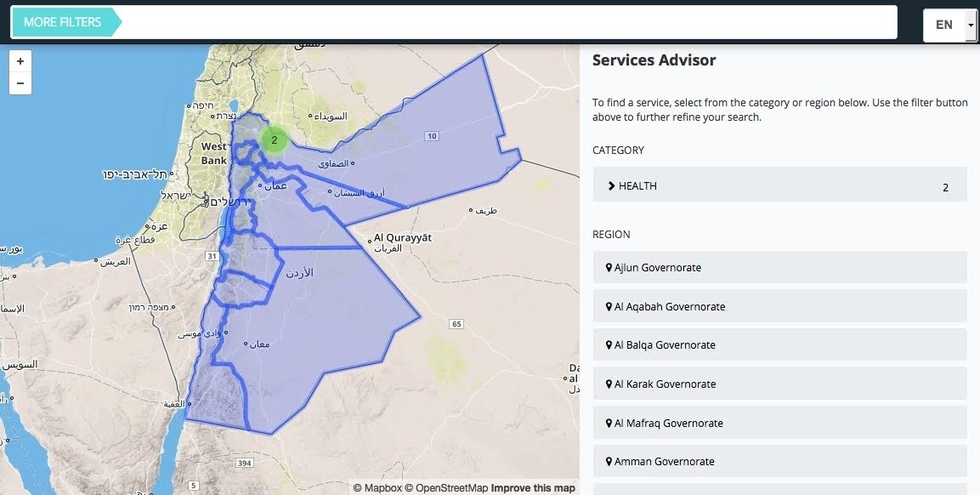Technology can help refugees, but connectivity remains a challenge

TORONTO, Canada – Humanitarian organisations are increasingly looking to technology as a key tool to improve refugees’ and other marginalised groups’ access to services and information.
But major obstacles remain to connect the more than 65 million refugees worldwide to web-based applications and other services that experts hope can improve their daily lives.
“If we’re able to achieve a greater degree of reliability in the extent to which refugees are connected, there’s enormous potential to improve the way services are delivered to refugees,” said Alan Vernon, project Lead of the UN refugee agency’s (UNHCR) Connectivity for Refugees initiative.
In a live web cast organised by Ryerson University in Toronto, Vernon explained that displaced people use technology extensively to stay in touch with their families.
For many, mobile phones serve as the main lifeline to their home countries, to the loved-ones they were forced to leave behind, and to the outside world at large.
But it can be used as a tool for education, employment, healthcare and other services, as well.
“There’s much, much more that we can do,” Vernon said. “The list is really endless in terms of potential.”
Getting connected
While there is some network connectivity – 2G and 3G mobile coverage – in most places refugees are living, being connected to reliable networks that are also affordable is the big challenge, according to Vernon.
Refugees often struggle to buy data plans or SIM cards for their cell phones, while restrictions on their ability to work in their host countries also exacerbate that financial hurdle.
According to the UNHCR report, refugees are 50 percent less likely than the general population to have Internet-connected phones, while 29 percent of refugee households have no phone at all.
The rural-urban divide – most refugees live in rural environments – coupled with the fact that most refugees live in the Middle East and North Africa, Sub-Saharan Africa, and South Asia, where 3G mobile coverage is below average, makes this connectivity issue even more difficult.
But Vernon said that, “if we’re able to achieve a greater degree of reliability in the extent to which refugees are connected, there’s enormous potential to improve the way services are delivered to refugees”.
Great connectivity can translate to better access to education, increased knowledge of available services, and more reliable communication between refugees, their families, and humanitarian service providers.
“Connectivity is absolutely critical for refugees when it comes to staying in touch with their families… They’re absolutely interested in what’s going on in their home communities [and] having a phone is really critical to their wellbeing, and they are very upset when networks are down or if they lose access for any reason,” Vernon said.
Services Advisor
One such tool is Services Advisor, a web application developed by Canada-based non-profit PeaceGeeks in coordination with UNHCR, to connect refugees with service providers offering education, health, shelter, employment and other services.
“The idea behind this app was to try to connect refugees and service providers to all of the other services that are available to them,” Renee Black, PeaceGeeks’ executive director, told Middle East Eye.
The app – which presents a detailed map – will allow users to filter out services by type and location, and whether refugees need a referral to access them. Service providers can also update the data in real time if their services change.
Black said the service should be made available to the approximately 655,000 refugees living in Jordan as soon as next year and specifically target the 85 percent of refugees living in urban centres in Jordan without daily access to service providers.
“The challenge is that a lot of this information is not currently available to refugees directly. They are dependent on service providers and UNHCR in order to access this information,” Black said.
“So the goal of the app is to empower refugees to access this information and therefore to be able to access some of the services directly.”
Black said PeaceGeeks hopes to implement similar systems in Turkey and Somalia next. “The easy part is actually getting the technology and the information set up… the hard part is actually continuing to keep it up to date.”
Potential pitfalls
But relying on technology is not without concerns and challenges.
Refugees may be hesitant to use the latest technologies, or unable to do so, as a result of language barriers, lack of literacy, and other issues. There is also a risk of some vulnerable populations who are not readily connected to the Internet to be left behind.
Black said that because Services Advisor is a web-based app, even if refugees cannot access it on their cell phones, they could go to Internet cafés or community centres to see it on a web browser.
She added that she hoped the app would help service providers and the UN see what gaps in their services exist and where, and how best they can be filled.
“We really feel like the coordination piece is extremely important and we’re really hoping to see Services Advisor play a role in helping service providers, donors and UNHCR make better informed decisions about the deployment of services,” she said.
Meanwhile, Vernon said UNHCR is looking to partner with the private sector, and with mobile network operators, governments and regulators, “to extend infrastructure into refugee impacted areas”.
Political barriers to connectivity should also be addressed, and groups should take steps to ensure that locals in host countries do not see refugees as being privileged over them, he said.
“What we need to do… is incorporate the issue of connectivity into our broader efforts of trying to create tolerance and empathy in support of refugees generally,” Vernon said.
“We need to be sensitive to local pops. We have to be understanding and listen clearly to those concerns and try to address those effectively… Certainly having access to information is better than cutting people off from information.”
Middle East Eye propose une couverture et une analyse indépendantes et incomparables du Moyen-Orient, de l’Afrique du Nord et d’autres régions du monde. Pour en savoir plus sur la reprise de ce contenu et les frais qui s’appliquent, veuillez remplir ce formulaire [en anglais]. Pour en savoir plus sur MEE, cliquez ici [en anglais].




